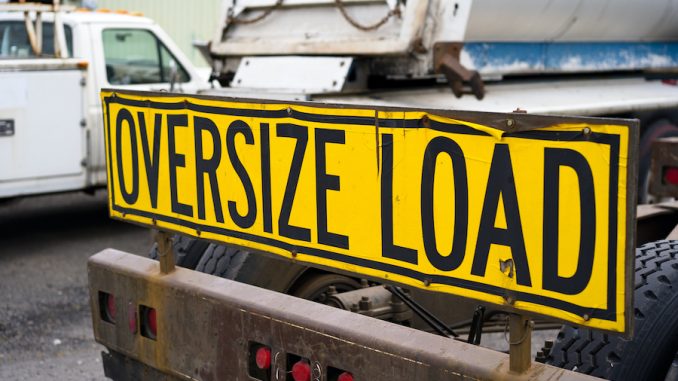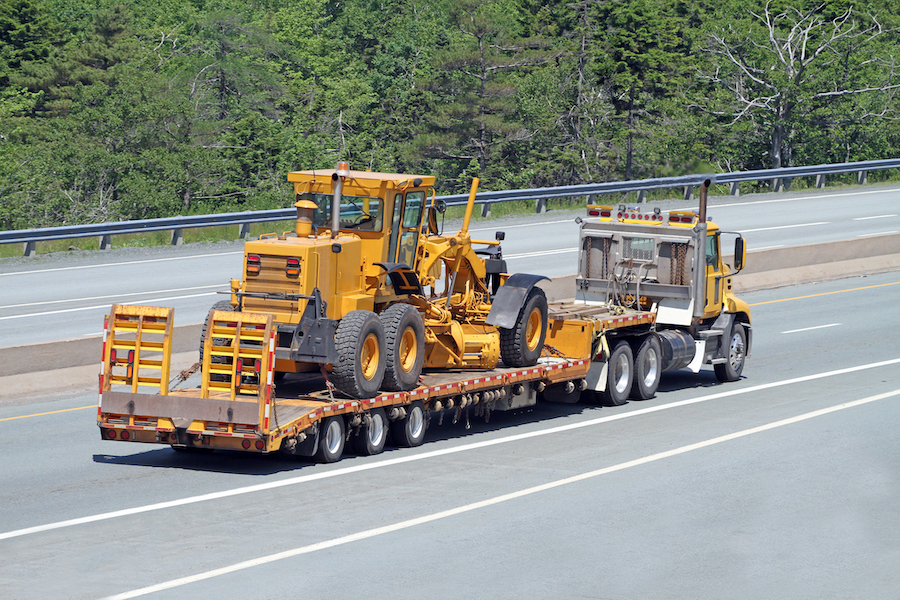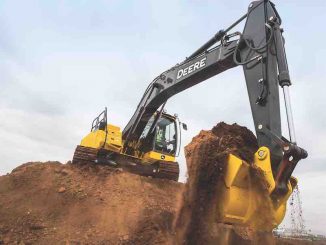
View the complete article here.
Heavy hauling is a task that requires detailed planning and careful coordination to minimize collision or injury. These hauling safety tips not only reduce the likelihood of injury, but the steps can also help companies save money by avoiding damage or loss.
If you are preparing to move a heavy load, then it is essential to follow the tips below:
Use the Right Vehicle and Trailer
Just because you have a trailer that is large enough for the load, doesn’t mean that the trailer is strong enough to handle the weight. It is important to have the right axle design and load configurations to carry the size of the load that is being shipped. Check the safety rating and load capacity of the trailer, and remember that the jarring of bumps or uneven terrain effectively increases the weight of your load. A variety of trailers can be used, such as flatbed, lowboy, drop deck, or gooseneck trailers. Also, make sure that the vehicle has sufficient power to pull the trailer safely.
A safety check of the vehicle and trailer should be completed before departure. Everything should be in working order, including the lights, reflectors, tires, horns, axles, hydraulic hoses, and more. Look for visible signs on the tie-down equipment that could indicate fraying or breakage in transit. Brakes should always be applied before loading to minimize motion while the equipment is moved onto the trailer or vehicle.
Load Securing and Distribution
Now that you have the right trailer, it’s time to design the best distribution for the load. Improper loading is one of the most common causes of truck accidents. Consider the placement of the transported items to keep the weight balanced evenly through the load. An uneven load increases the risk of tipping and makes it hard for the driver to maintain control of the vehicle and trailer.
Everything should be secured properly to minimize shifting in transit. Depending on the trailer, you might need to use tie-downs or wedges and checks. Make sure that the cargo is always locked in place, so it doesn’t fall off on the road. Large pieces of machinery, such as construction equipment, should be secured based on the regulations set by the Federal Motor Carrier Safety Administration.
Driver Training and Experience
Putting a novice behind the wheel when a big load is being transported could be a costly and dangerous mistake. Make sure that your drivers have experience and applicable training for securing the load, handling the equipment, and road safety protocols. In addition to the initial training required for heavy load drivers, it is also smart to maintain an ongoing training schedule to ensure the skills are fresh at all times.
One important aspect of driver training is to never drive above the speed limit. The faster you drive, the more stress it puts on the load. In many cases, heavy loads need to drive under the posted limit. Speed can damage the road and also increase the risk of an accident. Keep in mind that most trailers come with a speed rating, which should never be exceeded.
Road Laws and Local Regulatory Requirements
Check the laws and regulations for every state where the load will be transported. These laws change as you cross state borders, so don’t assume that the regulations at your destination are the same as those as the departure point. Additionally, Federal regulations apply for interstate commercial loads that weigh more than 10,000 pounds.
In some situations, it is necessary to acquire permits before oversized loads can travel on state roads or highways. Also, check to see if a pilot car is required for your load.
Optimize Route Planning
It’s always a bad idea to take a heavy load through rush hour traffic in a big city. Take time to map out the route and look for potential issues that could result in problems. If possible, design a route that does not include areas of road construction, heavy traffic, toll roads, low hanging bridges, or any other interruptions or delays that could slow transportation.
You need to be sure that the roads can handle the weight, height, and width of the load. Never assume that all roads can handle the weight of a heavy load. If the area is unfamiliar, then it can be helpful to drive the route in a smaller vehicle first to identify and areas of concern.
Check and Double-Check the Load
You can never be too cautious when it comes to checking the safety, distribution, and security of a heavy load. After these tips have been implemented, check everything a second time. It can be helpful to have a safety check system in place where multiple people check the load, instead of relying on a single person.
If cargo is extended more than 3 feet beyond the body of the vehicle or trailer, then red flags should be placed as markers. Loose materials, such as rocks or dirt, on the equipment should be cleaned off as much as possible, so these things don’t fly off on the road.
Protecting People and Equipment
The right safety strategies are essential to protect the safety of drivers and other people on the road. At the same time, equipment damage can be avoided when strict safety protocols are followed. These tips will help your transport to go as planned, so you can avoid common problems that occur with heavy hauling.
View the complete article here.
How can I ensure the safety of hauling heavy equipment?
Ensure safety by using the right vehicle and trailer with proper load configurations, conducting regular safety checks, securing the load properly, providing driver training and experience, following road laws and local regulations, optimizing route planning, and performing thorough double-checks on the load.
What are the key considerations for loading heavy equipment onto a trailer?
Consider using the right trailer with adequate load capacity, balance the weight evenly, secure the load properly using tie-downs or wedges, and adhere to regulations set by the Federal Motor Carrier Safety Administration for securing large machinery.













































